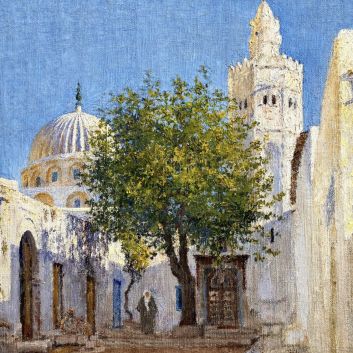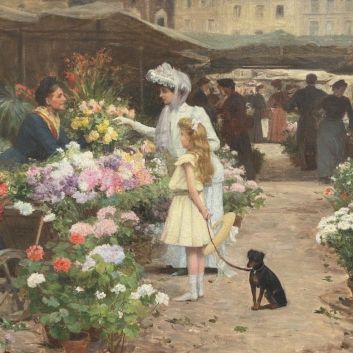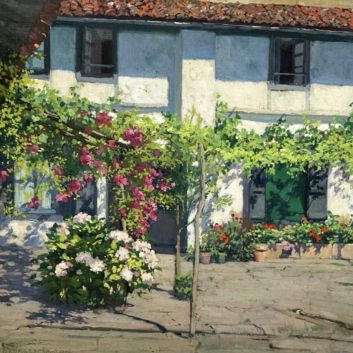Rating and value of paintings by Paul Signac
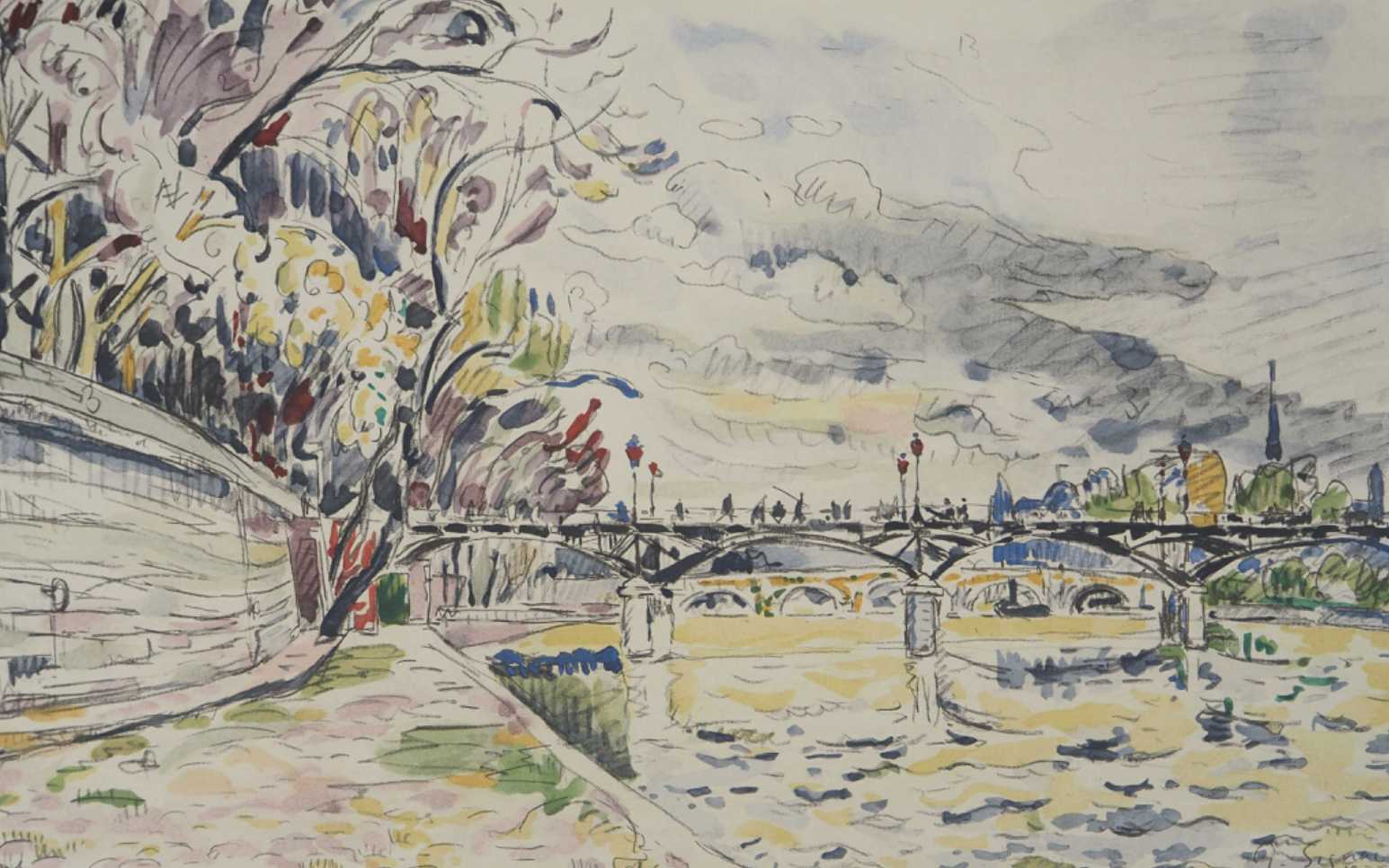
If you own a work by or about the artist Paul Signac, and would like to know its value, our state-approved experts and auctioneers can offer you their expert appraisal services.
Our specialists will carry out a free appraisal of your work, and provide you with a precise estimate of its current market value.
Then, if you want to sell your work, we'll point you in the right direction to get the best possible price for it.
Artist's rating and value
An important artistic figure of his time, Paul Signac is a sure bet on the art market. Constantly evolving, his value remains high and his works are sold internationally.
In the auction rooms, canvases depicting Parisian landscapes or topography, painted in the early 1900s, are the most sought-after and therefore highly prized. Drawings are also very popular with collectors.
A work by Signac, for example, can sell for a hundred million euros at auction, as demonstrated by his 1892 oil on canvas, Concarneau, calme du matin, which sold for €33,906,330 in 2022, whereas it was estimated at between €27,923,000 and €34,903,200.
Order of value from the most basic to the most prestigious
Technique used | Results |
|---|---|
Print - multiple | From €10 to €33,330 |
Drawing - watercolor | From €240 to €251,770 |
Paint | From €270 to €33,906,330 |
Response in less than 24h
Paul Signac's style and technique
The central subject of his paintings, towns, ports and seascapes are Signac's favorite themes, marking a strong connection between the artist and the marine world.
His work is deeply rooted in the changing atmosphere of the Mediterranean and northern European coasts, which he captures with luminous meticulousness.
The artist was close to the work of Georges Seurat, with whom he co-founded Neo-Impressionism, of which Pointillism is one of the most emblematic expressions. This movement, derived from Impressionism, is based on a scientific method of juxtaposing small touches of pure color.
Unlike mixing colors on a palette, these are applied directly to the canvas in tightly-packed dots. These touches, often in pastel or luminous hues, visually blend together when the work is viewed from a distance, creating effects of vibration and luminosity.
This pictorial technique gives greater relief to the composition, accentuating the luminosity of the works and offering a new perception of light and contrasts. It gives each canvas an almost musical dimension, where colors play like notes, reinforcing the harmony and serenity of the landscapes.

Paul Signac, his life and work
Paul Signac (1863-1935) was a French pointillist painter born in Paris, whose work had a profound impact on the history of modern art. Born into a well-to-do, cultured family, he grew up in an environment conducive to the discovery of the arts.
At the age of 16, his encounter with Impressionism at an exhibition was an aesthetic shock that determined his artistic career. Fascinated by the works of this new avant-garde, he tried to copy them, but was quickly rebuked by Paul Gauguin, who encouraged him to develop his own vision.
Self-taught, Signac had no formal academic training. His passion for painting led him to abandon his secondary education to devote himself entirely to his art.
Inspired by Édouard Manet, he moved to Montmartre, renting a studio in the heart of this bohemian neighborhood, where he rubbed shoulders with many Symbolist artists and writers, whose influence would shape his evolving style. It was also during this period that he befriended Claude Monet, whose approach to light and color was to have a decisive influence on his own work.
His career took a decisive turn when he began exhibiting at the Salon des Indépendants, a key venue for artists breaking away from academic institutions.
Aware of the need to free himself from the constraints imposed by official art, he helped found the Société des Artistes Indépendants, thus affirming his desire to see art evolve freely. It was also in this context that he met Georges Seurat, with whom he forged a fruitful collaboration.
Together, they founded Neo-Impressionism, a form of "scientific impressionism" based on the theory of tonal division. Their technique, pointillism, is based on the application of small touches of pure color that, when seen from a distance, optically blend in the viewer's eye, creating a new, more vibrant luminosity.
Camille Pissarro joined them, further enriching this nascent movement.
Seurat 's untimely death in 1891 called into question the foundations of this new movement.
To preserve and formalize neo-impressionist theory, Signac took up his pen and wrote a key essay, D'Eugène Delacroix au néo-impressionnisme, in which he defended the principles of color division and legitimized their approach. This seminal text consolidated his position as an intellectual and theoretician of the movement.
In parallel with his artistic career, Signac became close to anarchist circles, sharing with them a utopian vision of society and individual freedom. This political commitment is echoed in some of his works, notably in his famous portrait of art critic and anarchist activist Félix Fénéon.
Towards the end of his life, Signac settled in Saint-Tropez, where he continued his exploration of seascapes, ever faithful to his pointillist technique. In 1915, he was appointed official painter to the French Navy, an honorary title that crowned a career marked by a constant quest for light, harmony and artistic innovation.

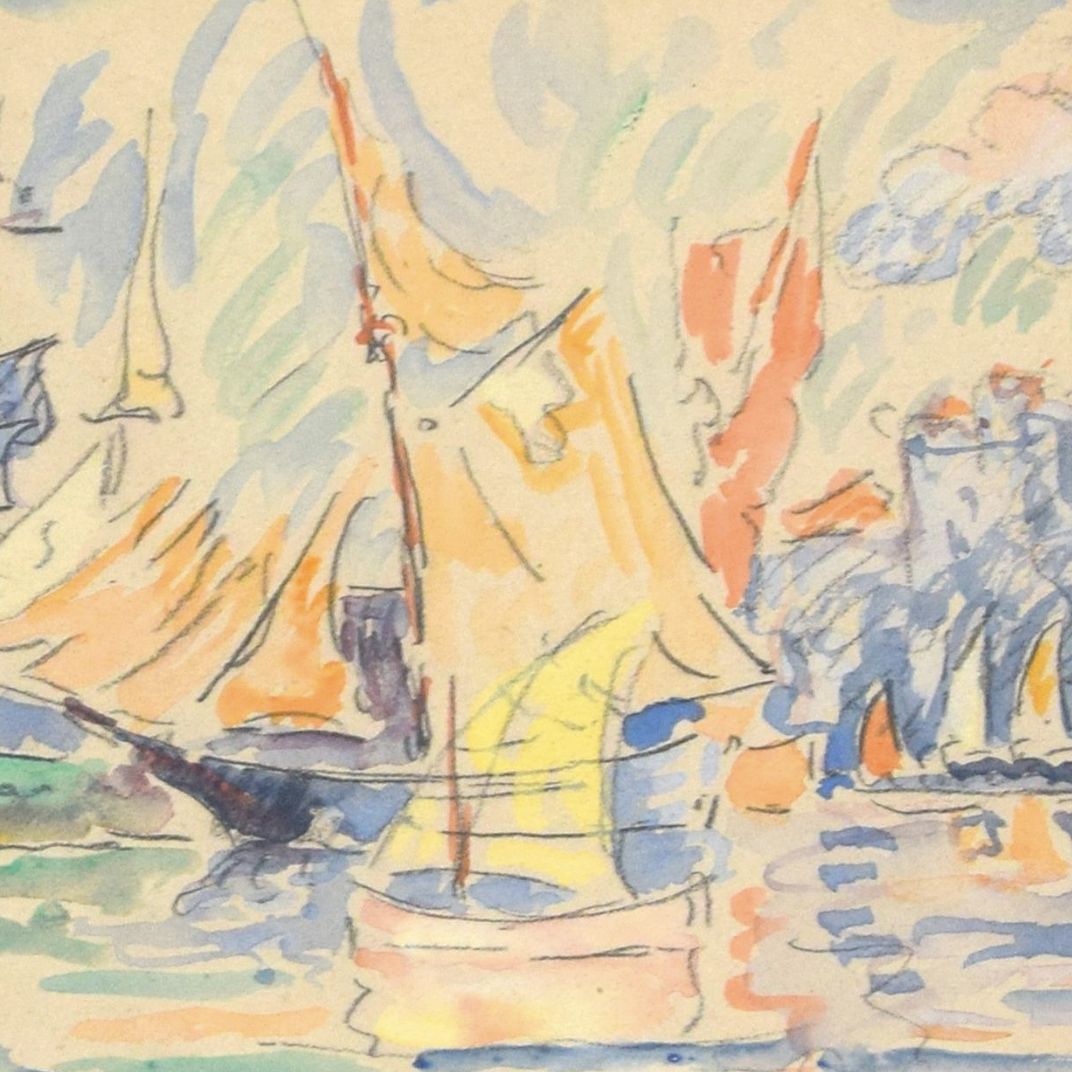
Focus on Signac's lithograph on the cover
This lithograph by Paul Signac, entitled Le Port de La Rochelle, embodies the very essence of his artistic approach, in which light and color intertwine harmoniously.
Produced in 1898, this work reveals a vibrant maritime scene, typical of Signac's interest in ports and seascapes, recurring motifs in his work.
The composition is characterized by flowing lines and simplified shapes, typical of Pointillism, but also by subtle color schemes.
Shades of blue, violet and ochre blend to evoke the reflections of sky on water, while the white sails of the boats rise lightly, capturing the movement and softness of the sea air.
The soothing pastel color palette conveys a sense of serenity and escape, inviting the viewer to immerse themselves in this tranquil atmosphere.
The choice of lithography as a means of expression also underlines Signac's desire to make his art accessible and spread the ideas of Neo-Impressionism to a wider audience.
By combining the technique of lithography with his artistic vision, he succeeds in creating work that is both refined and popular, true to his commitment to art as a vehicle for emotion and reflection.
With this lithograph, Signac doesn't just depict a landscape: he captures the essence of a moment, conveying an atmosphere and arousing emotions.
His keen eye for nature and talent for interpreting it make this work a precious testimony to his artistic heritage, while also illustrating his central role in the development of Pointillism and Neo-Impressionism.
Signac and the politics of pointillism
Paul Signac's imprint on his period
Considered the leading theorist of Pointillism and Neo-Impressionism, Paul Signac left an indelible mark on his era, both through his technical innovation and his role as an intellectual.
Refusing to conform to academic practices, he developed a style deeply rooted in scientific reflection on light and color.
As co-founder of Neo-Impressionism alongside Seurat, he went further than classical Impressionism, seeking to structure the principles of visual perception. Other theorists, such as Jacques Villon and Olivier Debré would pursue similar lines of thought in their own currents.
Pointillism, with its small touches of juxtaposed color, became for him not only a means of retranscribing reality, but also a method of giving his works a vibrant, almost palpable dimension.
His influence extends far beyond the realm of painting. Signac, a true theorist, published writings that not only explained his approach, but also guided a generation of artists in search of novelty and rigor.
He encourages young painters to explore the relationship between science and art, urging them to see creation as a field where research and experimentation are essential.
His ability to theorize the principles of Neo-Impressionism helped solidify this movement, which was to have a lasting influence on the European art scene at the turn of the century.
If Signac made his mark during his lifetime, it was also due to the singularity of his work. His seascapes, his harbors bathed in light, his urban scenes inundated with brilliant colors, testify to an exceptional mastery of the pointillist technique, but also to a rare sensitivity to nature and urbanity.
Far from being a mere craftsman of color, he infuses his canvases with a poetic vision of the world, where light becomes almost musical, vibrant with life.
Today, Paul Signac enjoys growing recognition among art historians and collectors alike. His works, present in the world's greatest collections and museums, continue to fascinate with their modernity and boldness.
An innovative artist and rigorous theorist, Signac remains a key figure in the history of art, whose influence is still felt far beyond his own era.
Recognizing the artist's signature
Paul Signac's works are not all signed, and copies may exist. The production of fake paintings was very important for this artist. Here's an example of his signature.
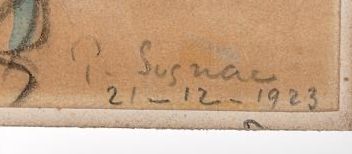
Appraising your property
If you happen to own one of Paul Signac's works, ask for a free appraisal without delay, using the form on our website.
A member of our team will contact you promptly to provide you with an estimate of the value of your work, as well as any relevant information about it.
If you're thinking of selling your work of art, our specialists will also be on hand to help you find alternative ways of selling it at the best possible price.
Response in less than 24h
Related topics

Value and quotation of works, paintings by Yves Brayer
Yves Brayer, a painter of 20th-century figurative art, is a figure forgotten by the general public but sought-after at auction. Estimated in 24h.
Read more >

Rating and value of paintings by Émile Dec...
Émile Deckers was a Belgian Orientalist painter whose drawings and oil paintings are highly valued at auction.
Read more >
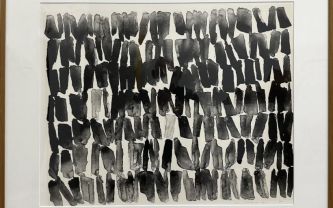
Cote et valeur 2024 des tableaux, dessins, peintures de Lee...
Lee Ufan is a contemporary South Korean artist who has produced works of considerable value at auction.
Read more >
Secure site, anonymity preserved
State-approved auctioneer and expert
Free, certified estimates
